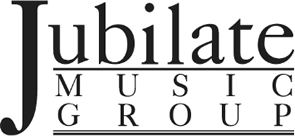By Lee Dengler and Susan Naus Dengler

Finally, they were on their way! After years of exile in Babylon, God’s people were returning to Judah. Though some had decided to remain in Babylon, a contingent, led by the priest and scribe, Ezra, began the journey home. To them, Babylon was still a land where they simply could not sing the Lord’s song, even when coaxed by their captors. All they had been able to do was to hang their harps, the instruments that had once accompanied their voices, on the willow trees that stood guard by the river. The drooping branches of the trees had served as a visual reminder of their own weeping.
And then, they were home in their beloved native land! In the second chapter of the book of Ezra, we find the listing of folks who returned to Jerusalem and other Judean towns. There were the priests, the temple servants, the gatekeepers of the temple. And there were the singers!
As the foundations of the new temple were laid, the singers began their song, as they praised and gave thanks to the Lord. For those who listened, there was a mixture of emotions. While some shouted for joy, others, who had remembered the former temple and all they had endured, wept with a loud voice. It was hard to distinguish the shouts of joy from the noise of their crying. Nevertheless, the combined sound of joyous shouts, sorrowful weeping and glorious singing could be heard for miles around.
I have thought about these people many times during the months of the COVID-19 pandemic, especially after we learned that singing in groups had the ability to spread the virus more virulently than almost anything else. How could we sing the Lord’s song in such a land? But now, it seems that we too are on our way home. Almost daily, we learn of positive indicators that tell us that choirs can safely return to in-person, close-up, full-choir singing. Thanks be to God! This is the news for which we have been waiting over these past, long months!
To be sure, those months were long! What could two musicians, a composer and a lyricist, find to do that might be helpful, when the voices of choirs, across our world had been silenced? During the dark days of the pandemic, as we hoped and believed that this day would eventually come to fruition, we began work on the resource, Restore Our Song, to be used by choirs and congregations when life (and church singing) would, once again, return to normal. We had faith that lying ahead of us would not only be a return to singing, but enormous potential for renewal and growth, and with that in mind, we came up with tools for celebrating the return to corporate worship. We wrote plans for a special celebration for choirs, to capture much that had been missed over the past 15 months. We wrote devotions to be used during those early rehearsals, that remind us of God’s faithfulness, even during dark times. There are anthem suggestions, all of which are very accessible for voices that have grown rusty over months of a hiatus. We also came up with a list of recruitment ideas, as we hope that many church members who had not sung in choirs previously, (especially younger singers) might now consider joining their choir, to be part of the group who would lead their gathered flock back to worship.
Yet, Restore Our Song is not just for choirs. For entire congregations, we created a special, celebratory worship service, and two different hymn sings, that churches might use to find festive ways to return to singing the hymns of our faith. There is a long list of scriptures that are appropriate to use for several worship services. And, finally, there is a song written especially for this momentous time, appropriately called, “Restore Our Song.” It can be used by choirs, congregations and worship teams, and lends itself easily to accompaniment by any instruments.
It is our prayer that churches, across our nation, and our world, will find this resource to be useful in helping them to find their way home as they raise their voices in songs of praise for God’s abiding faithfulness and love.




